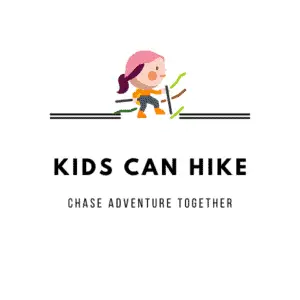
As a general rule, you can not camp in state parks for free. Camping in state parks usually attracts a fee of some sort ranging from a few dollars up to around $60 per night.
Some state parks are free to enter and have very affordable camping. You can check out this post to see which are the cheapest state parks.
There are however many places that you can camp for free which are outside of state parks but still incorporate many of the benefits found in state parks.
Camping does not have to be constrained to just RV parks and resorts. These places can get quite pricey and the cost adds up quickly. Free camping options are very easily found if you know where to look.
Camping In National Forests

On the whole national forests offer a lot more free camping than state and national parks. The United States has 154 national forests which are maintained by the US Forest Service.
National Forests have both paid camping as well as dispersed camping. Dispersed camping is sometimes known as boon-docking. It is a way for you to camp for free on public government-owned land.
Free camping is allowed in all national forests unless signs say otherwise. These areas for free camping or boon-docking have no amenities so you will need to be self-sufficient to use them.
If you are planning to boondock in a national forest you should plan your stay accordingly.
Make sure you arrive during daylight hours
It is important to arrive at your campsite with plenty of light available to set up. This ensures that you can check the surrounding area for and dangers.
Dangers you will want to be aware of are hazards on the ground at the campsite such as broken glass. You will also want to select a campsite that is appropriately sheltered from any potential bad weather.
Check Any Alerts For The Area
National forests are often subject to weather warnings and such. Before you leave for your trip, make sure that there are no weather warnings and prepared for the expected weather.
Forest and grass fires are a very real threat, especially in the summer months. You must be aware of those risks and avoid any danger zones.
Take Out Everything You Bring In
It is everyone who uses these beautiful forests to help maintain their beauty and protect the wildlife that lives there. This means leaving no trace of your visit. More specifically, making sure that you bring home all your waste.
Be Prepared
Nature can be unpredictable and it is wise to bring more than what you feel you will need. A well-appointed first aid kit is a must for boondocking in a national forest, especially tent camping.
It will also be vital that you have an adequate amount of water and fuel for everyone at your camping party. This goes for both tent campers and RV type camping.
Back-Country Camping in National Parks

Many national parks allow you to camp for free for 14 days in what they term “backcountry camping”. This term is used as opposed to dispersed camping because you are not allowed to just camp anywhere in a national park.
National parks that allow back-country camping require you to purchase a pass on average $10-40. This pass then allows you to camp for a maximum length of 14 nights. So while it does technically cost some money it is more or less free camping. Even with the most expensive pass you are still only looking at less than $2 a night.
Once you have a pass you will be directed to areas within the park that you can camp. It is almost always restricted to tent camping. The sites are usually off the beaten path so to speak and away from the general public.
It is interesting to note, however, that even with a 14-day pass you are not allowed to stay on one spot for the entire time. The park rangers will ask you to move on after a few days to a new spot. Back-country camping is not really the ideal answer if you are looking for a place you can just relax in for a few weeks and make a home base.
If you are looking at staying put in the national park for an extended period and don’t want to have to move around. Most national parks do have campgrounds where you can reserve a site for a fairly reasonable cost.
BLM Land

BLM land is short for Bureau of Land Management. Like much other government-owned lands they offer both fee payable camping as well as dispersed boon-docking camping options.
Fees vary between campsites but are generally first come first served. You are required to pay for your site in full within half an hour of arriving at your site. In peak seasons these campsites can fill up exceptionally fast. However, once you have your site you can stay for the maximum amount of time allowed. A small docket will be provided to you which you can display on a post located on your site. This lets the rangers and other campers know that your site is paid for and occupied. This is very helpful especially in cases where you may want to leave your site to fill and empty your tanks etc
Dispersed camping is wonderful in that it is often located just outside stunning national parks. I know there is some exceptional BLM land just outside of Zion National Park for example. It is a great place to park for a while while you enjoy the park or wait for a site to open up in the park campground.
You can use the BLM website to help you find places to camp for free in your chosen area. It will detail different areas and places where you can camp.
